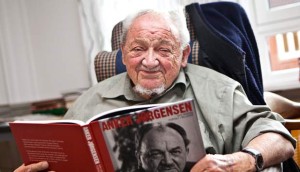Anker Jorgensen, Denmark’s prime minister between 1972 and 1973 and again between 1975 and 1982, died on Sunday aged 93. Jorgensen’s time in power was characterised by a sluggish economy and rising unemployment, and although popular, he was criticised for not doing enough to reform the economy.
- He first became prime minister in 1972 after Denmark in a referendum had voted yes to joining the European Economic Community, of which it became a member the following year.
- Known for his unpretentious and down-to-earth style, the former shipyard and warehouse worker began his political career in the country’s trade unions.
- Throughout his tenure he continued to live with his wife and four children in an apartment in a working class district of Copenhagen.
Anker Jorgensen
- Between 1972 and 1981 he led five cabinets as Prime Minister.
- He led or represented the Social Democratic Party for well over 30 years.
- He has been described as not having the image of a strong or visionary leader, but through his down-to-earth and earnest demeanor he managed to maintain a wide support for the Danish welfare state in the population.
- In 1992 he was chosen to travel to Iraq to negotiate the release of a group of Danish hostages with Saddam Hussein, a task which he successfully accomplished.
Denmark
- Capital : Copenhagen
- Currency : Danish Krone
- Official Language : Danish
- Prime Minister : Lars Løkke Rasmussen

















